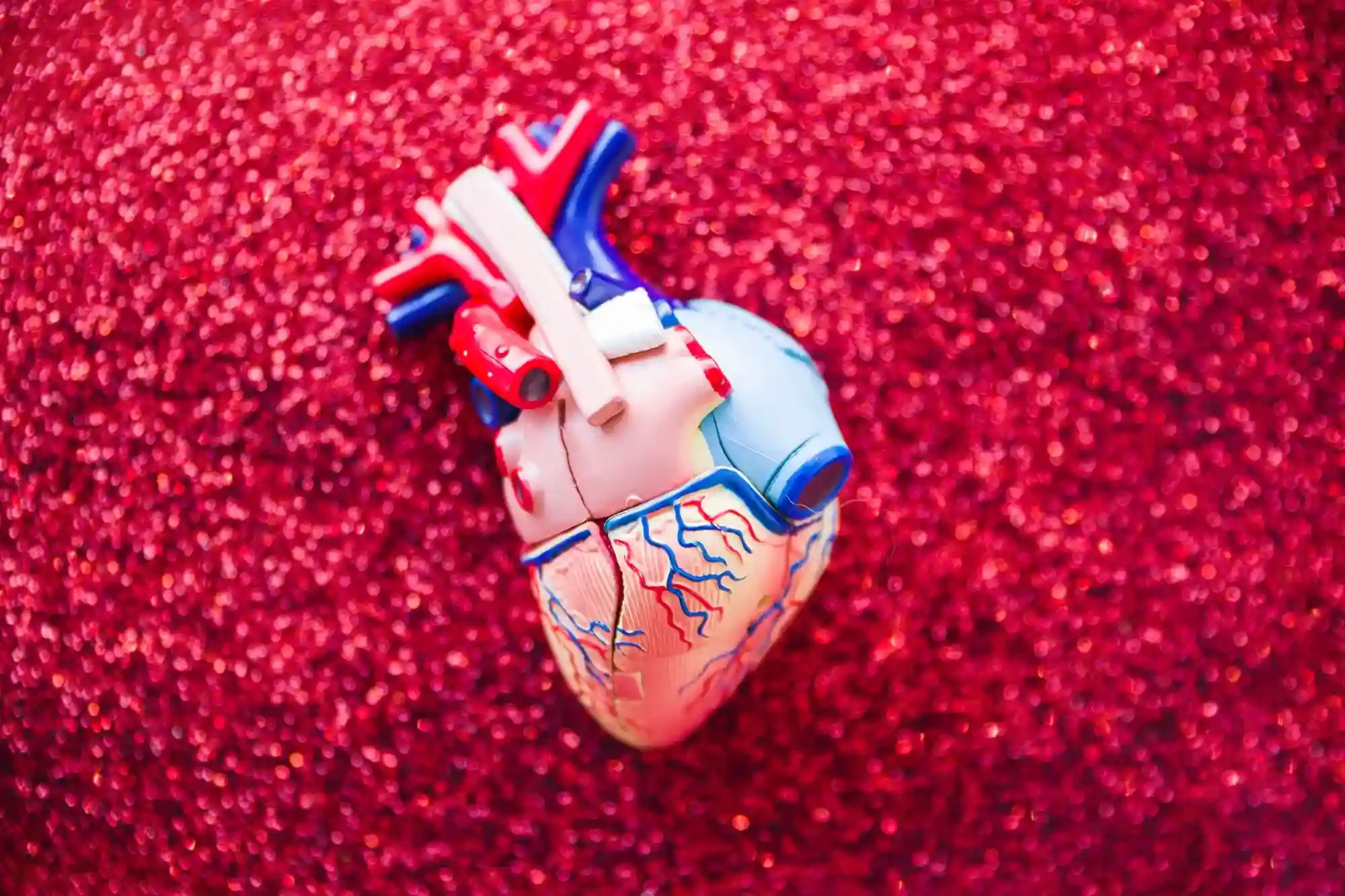Stem Cell Treatment for Heart Failure: What You Need to Know

Did you know that heart failure affects about 64 million people worldwide? It occurs when your heart struggles to pump blood effectively, leaving the body deprived of the oxygen and nutrients it needs.
While there are several traditional treatments available, stem cell therapy is emerging as a promising alternative for heart failure treatment. This approach uses specialized cells, called stem cells, to repair and regenerate damaged heart tissue.
In this blog, we’ll discuss everything about stem cell treatment for heart failure—how it works, what the research says, and what the future holds. Let’s dive in!
What is stem cell therapy for heart failure?
Imagine if your body had the ability to heal itself, repairing damaged tissues and regrowing healthy cells. Well, that’s the basic idea behind stem cell therapy—using special cells to regenerate and repair the damaged parts of your body. In the case of heart failure, stem cells are used to repair the heart muscle that’s been damaged due to conditions like heart attacks, high blood pressure, or other heart-related diseases.
The treatment process starts with collecting stem cells. Here are some common types of stem cells used in heart failure treatment
-
Bone marrow mononuclear cells: Harvested from the bone marrow
-
Mesenchymal stromal cells: Sourced from fat or umbilical tissue
-
Cardiac-derived stem cells: Taken directly from heart tissue
The cells are then processed and delivered to the heart in three ways:
-
Intramyocardial injection: Directly injected into the heart muscle.
-
Intracoronary infusion: Delivered via the coronary arteries to reach the heart.
-
Intravenous administration: Administered through an IV, with the stem cells traveling to the heart via the bloodstream.
After entering the body, they work to regenerate damaged tissue and improve the heart’s ability to pump blood.
Efficacy of stem cell therapy in heart failure
Stem cell therapy for heart failure is an exciting new treatment still under study, but early findings are promising. Research suggests it may help improve heart function, ease symptoms, and even save lives.
A multinational study involving 315 patients found that those receiving stem cell therapy reported improved quality of life and lower rates of hospitalization and death compared to those receiving standard treatment.
Another major study showed that patients with chronic heart failure who were treated with mesenchymal stem cells had a 65% lower risk of non-fatal heart attacks and strokes. For those with high inflammation levels, the risk of death from heart-related issues dropped by 80%.
While the results are encouraging, stem cell therapy for heart failure is still in its early development. Additional research is necessary to confirm its long-term safety and benefits.
How much does stem cell therapy for heart failure cost?
The cost of stem cell therapy for heart failure can vary a lot. Since it’s still an experimental treatment in many places, most insurance plans won’t cover it. As a result, patients often pay for the treatment out of their own pockets. On average, the cost ranges from $5,000 to $50,000, depending on a number of factors.
The cost ranges from $10,900 to $15,000 for procedures related to congestive heart failure. For autologous treatments, prices average around $7,694, while allogeneic treatments can be around $6,038.
Factors influencing the stem cell treatment for heart failure
There are a few key factors that can affect the overall cost of stem cell therapy:
-
Type of stem cells
Different types of stem cells (such as bone marrow, cardiac-derived, or mesenchymal stem cells) can affect the price. Some stem cells require more complex processing or special handling, which can increase costs.
-
Number of cells used
The more stem cells that are needed, the higher the cost. Some treatments may require larger doses for better results, which will naturally increase the price.
-
Source of stem cells
Stem cells harvested from your own body (autologous stem cells) may cost less than those from a donor source (allogeneic stem cells), which need additional testing and preparation.
-
Processing and laboratory fees
Stem cells need to be processed in specialized labs, and the cost of cell expansion (growing the cells in a lab to increase their number) can add to the overall price.
-
Clinic location and expertise
The cost of the procedure will also depend on the clinic’s location. Stem cell treatments are available in countries around the world, and the costs may be higher in places with advanced medical facilities and well-known experts in the field.
6. Regulatory compliance and oversight
Finally, the regulatory standards of the clinic play a part in the price. Facilities that follow strict health regulations and have proper oversight tend to charge more, but they offer safer treatments. Clinics that aren’t regulated as strictly might be cheaper, but there could be more risks involved.
Additional costs to consider
Beyond the therapy itself, there may be other costs involved:
-
Doctor consultation fees: Consultations with specialists who evaluate whether you’re a good candidate for stem cell therapy.
-
Follow-up care: Stem cell therapy may require follow-up visits and additional treatments to monitor your progress and manage any side effects.
-
Travel and accommodation: If you seek treatment abroad, travel expenses and accommodation should be factored in, especially in countries like Mexico or Thailand, where stem cell therapy is more affordable.
Where to get stem cell treatment for heart failure?
Stem cell therapy for heart failure is available in several countries around the world, but it’s important to note that it’s not yet FDA-approved in many places, meaning it's still considered an experimental treatment. This makes it essential to carefully research clinics, as the quality and safety of treatments can vary.
In the United States, stem cell treatments for heart failure are offered in various clinics, particularly in places like Florida, which has become a hotspot for such procedures. However, many of these clinics aren’t FDA-approved, meaning they may not meet the same strict regulations as other medical treatments.
A study on Florida clinics revealed that while the success rate for treating heart conditions ranged between 65% and 85%, the cost could be anywhere from $6,000 to $20,700. These treatments are often done using stem cells derived from adipose (fat) or umbilical tissue, but since the therapy is still experimental, patients should be cautious and ensure they choose a clinic with a strong reputation for safety and quality care.
Mexico is another popular destination for stem cell therapy, where many patients seek treatment at more affordable prices. The medical care in Mexico is often high-quality, but since it’s not FDA-regulated, it’s important to do your homework and make sure the clinic is reputable.
In Thailand, stem cell treatments for heart failure are also available, and patients can find advanced medical facilities that offer these therapies at lower costs compared to the U.S. However, like in Mexico, the regulatory environment is different, so it’s important to choose a clinic with a solid reputation and experience in stem cell treatments.
Other countries such as Germany, India, and Panama also offer stem cell therapy, each with their own regulations and standards of care. When traveling abroad for stem cell treatment, it’s especially important to ensure that the clinic meets high safety and ethical standards.
Want to know more about stem cell treatment for heart failure? Reach out to QCG and let our team of experts assist you in finding the best treatment abroad.
Is stem cell therapy for heart failure safe?
Safety is an essential consideration for any medical treatment, including stem cell therapy for heart failure. Research suggests that this therapy is generally safe, with most clinical trials reporting minimal serious side effects. However, like any medical procedure, there are potential risks involved. It’s important to talk openly with your healthcare provider to fully understand these risks and make an informed decision.
Challenges of stem cell therapy for heart failure
Although stem cell therapy offers great promise for treating heart failure, there are still several challenges that need to be worked through. One major issue is figuring out the best type of stem cells to use. While mesenchymal stem cells (MSCs) are showing the most promise, other types, like cardiosphere-derived cells, are still being tested to see if they could be more effective.
Another challenge is deciding on the best delivery method. Stem cells can be given in different ways—through an intravenous drip, injections into the coronary arteries, or directly into the heart tissue. Each method has its own pros and cons when it comes to how well it works and how safe it is.
Another issue is limited research. While there are some encouraging studies, we don’t yet have enough large-scale, long-term data to know exactly how well this therapy works or what risks it might carry over time. Without more research, it’s hard to predict how effective it will be for different individuals.
Additionally, while the treatment has shown positive results so far, there are still safety concerns. Risks, though rare, include infection, immune reactions, or even the possibility of tumors if the stem cells aren’t processed properly. These risks need to be considered before moving ahead with treatment.
Should you consider stem cell therapy for heart failure?
Stem cell therapy is a new treatment that's showing promise for people with heart failure, especially if other treatments haven't worked. While early results look good, it's still considered an experimental treatment, and we need more research to fully understand how safe and effective it is in the long run.
Before considering this option, it's important to talk to a heart specialist. They can assess your health and the seriousness of your condition to help you decide if stem cell therapy is the right choice. They'll make sure you know both the potential benefits and the possible risks.
Looking ahead, there's hope for the future of stem cell therapy in treating heart failure. With new technologies like precision medicine, AI, and machine learning, we may soon learn more about how stem cells can help with heart disease, giving us even more treatment options down the line.
Disclaimer: Stem cell therapy for heart failure is an evolving field. More research is needed to confirm its efficacy and safety. This information is for educational purposes only and should not be considered medical advice.

